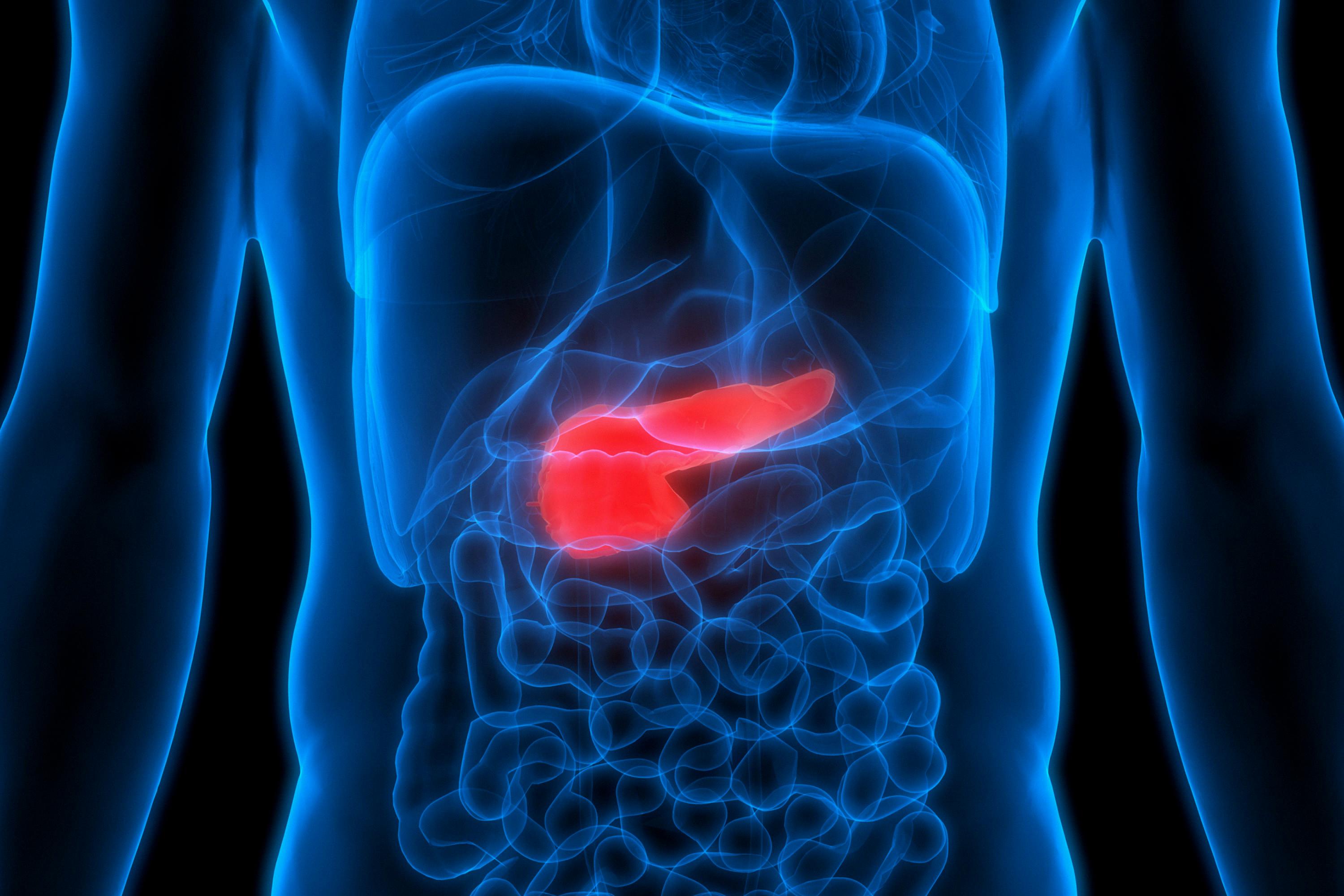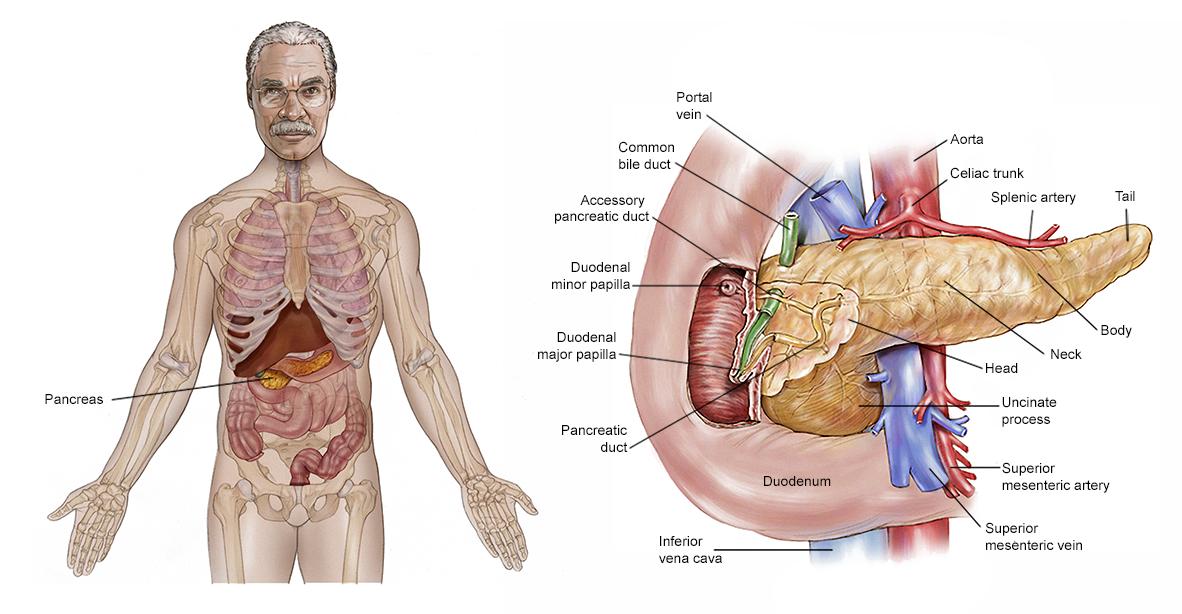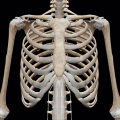The pancreas is a small organ located in the abdomen behind the stomach and in front of the spine. It is an important organ that helps to regulate blood sugar levels and produce hormones like insulin. The pancreas has two main parts: the head, which is located on the right side of the abdomen, and the tail, which is located on the left side of the abdomen. The head of the pancreas is connected to the duodenum (the first section of your small intestine) via a duct called ampulla while its tail is connected to your spleen.
The pancreas has an important role in our digestive system as it produces enzymes that help to break down food into smaller molecules so that they can be absorbed by our bodies. In addition, it also produces hormones such as insulin and glucagon which are essential for regulating our blood sugar levels.
Pancreatitis occurs when inflammation or swelling of this organ occurs due to injury or infection. It can be either acute (short-term) or chronic (long-term). Acute pancreatitis usually occurs suddenly and resolves itself with time while chronic pancreatitis may take months or even years to heal properly. Common symptoms of pancreatitis include abdominal pain, nausea, vomiting, fever, rapid heart rate, swelling or tenderness in your upper abdomen, fluid buildup in your belly, lowered blood pressure and dark-colored urine.
It is important to seek medical attention if you experience any symptoms related to pancreatitis as it can lead to serious complications if left untreated. Your doctor may perform tests such as ultrasound imaging or CT scans in order to properly diagnose you before they can provide treatment options based on your individual circumstances.
Overall, it’s important to remember that having a healthy pancreas is essential for good health so it’s important to take any measures necessary to ensure its health such as eating a balanced diet with plety of fruits and vegetables, exercising regularly and reducing stress levels where possible.
Pancreatic Pain: Where is it Felt?
Pancreatic pain is typically felt in the upper abdomen, usually just under the ribs on the left side of the body. It may also be felt in the back or radiate to the shoulders and chest area. The pain is oftn described as a dull ache but can become more severe and sharp over time. It may also come and go in waves, with periods of intense pain followed by periods of milder discomfort.

Source: endocrineweb.com
Location of the Pancreas
Your pancreas is located on both sides of your body. The head of the pancreas is on the right side, while the tail is on the left side. The pancreas lies along the first segment of your small intestine, called the duodenum. Your gallbladder, liver, and spleen surround your pancreas.
Symptoms of Pancreas Problems
Pancreas problems can manifest in a variety of ways, some of which may be qite serious. Common symptoms include abdominal pain that radiates to the back, nausea and vomiting, loss of appetite, rapid heart rate, fever, tenderness in the upper abdomen, fluid buildup in the abdomen and low blood pressure. Other less common symptoms may include jaundice (yellowing of the skin or eyes), weight loss, pale or oily stools, diarrhea and shortness of breath. In severe cases of pancreas problems such as pancreatitis or pancreatic cancer, a person may experience severe abdominal pain that gets worse after eating and can last for days or weeks. If you experience any of these symptoms it is important to see your doctor immediately to rule out any serious conditions.
Early Warning Signs of Pancreatic Cancer
Pancreatic cancer is a serious and potentially life-threatening condition. Early detection is key for successful treatment, so it’s important to be aware of the warning signs that may indicate pancreatic cancer. These can include:
• Dark-colored urine
• Itchy skin
• Digestive problems, such as abnormal stools, nausea, or vomiting
• Pain in the upper abdomen that may extend to the back
• Loss of appetite
• Swollen gallbladder (usually found during a physical exam)
• Blood clots
• Diabetes
• Jaundice (yellowing of skin and whites of eyes)
• Unexplained weight loss
• Abdominal pain that spreads to the back or shoulders
If you experience any of thee symptoms, it’s important to contact your doctor for an evaluation and diagnosis. Early diagnosis and treatment can help improve your chances for a positive outcome.
Signs and Symptoms of an Inflamed Pancreas
An inflamed pancreas, or acute pancreatitis, typically causes a sudden onset of severe pain in the upper abdomen that can spread to the back. This pain can be intense and may worsen with eating or when lying down. The abdomen may also be swollen and tender to the touch. Other symptoms of acute pancreatitis include nausea, vomiting, fever and rapid pulse. In some cases, yellowing of the skin and eyes (known as jaundice) may also occur.
Foods That Irritate the Pancreas
Foods that can irritate the pancreas include high-fat, fried, or greasy foods; processed, cured, and smoked meats; whole milk and other full-fat dairy products; rich sauces and gravies; sugary drinks; and alcohol. Eating too much of these foods in one sitting can cause an attack of pancreatitis, which is inflammation of the pancreas. It is best to avoid these foods if possible or to limit your intake to small portions. Additionally, it is important to maintain a healthy diet overall by eating plenty of fresh fruits and vegetables, lean proteins, whole grains, and healthy fats.
Living Without a Pancreas
Yes, it is possible to live without a pancreas. When the entire pancreas is removed, the body no longer produces insulin or other hormones that help to regulate blood sugar levels. This leads to diabetes, which will require long-term management and regular insulin injections in order to keep blood sugar levels stable. Without proper management, individuals may develop serious health issues such as infections, kidney failure, and heart disease. Fortunately, there are now advanced treatments available for people with diabetes to help them manage their condition and live full and healthy lives.
Managing Pancreatic Pain
Pancreatic pain can be treated with a variety of medications and other treatments, depending on its cause. For mild to moderate pain, over-the-counter medications such as paracetamol and ibuprofen may be recommended. For more severe pain, opiate-based painkillers such as codeine or tramadol may be prescribed. In addition to medication, lifestyle modifications and dietary changes can help manage pancreatic pain. Eating several small meals throughout the day insted of three large meals can help reduce stress on the pancreas. Limiting fatty foods, spicy foods, and alcohol consumption can also help reduce symptoms. Other treatments such as acupuncture and massage may be beneficial for those suffering from pancreatic pain.
Location of Pancreas in Women
Your pancreas is located in the upper left side of your abdomen, just bhind your stomach and in front of your spine. It lies across your body where your ribs meet at the bottom of your breastbone, about 6 inches (15 centimetres) long and shaped like a leaf. The wide end of the pancreas is known as the head, while the narrow end is called the tail. The pancreas plays an important role in digestion, producing enzymes which help to break down food.

Source: cancer.net
Checking the Pancreas
To check your pancreas, your doctor may use an endoscopic ultrasound. This test involves inserting a thin, flexible tube down your throat, through your stomach and into your small intestine. At the end of the endoscope is an ultrasound attachment that sends sound waves to create images of your pancreas and bile ducts. The images created by the ultrasound alow your doctor to identify any abnormalities in the pancreas. Your doctor may also send you to a gastroenterologist for a more detailed examination of the organ.
Appearance of Stool from Pancreatic Issues
Pancreatic poop typically looks pale, oily, and greasy. It is often more voluminous than normal due to the presence of unabsorbed fats. The stool may also float and be difficult to flush. Additionally, it may have a foul odor that is caused by the unabsorbed fat in the stool. The toilet water may also have an oily film on top of it. If you experience any of these symptoms it is important to seek medical attention as soon as possible.
Can Pancreatitis Be Cured Without Treatment?
Yes, in some cases pancreatitis can go away on its own. When a person has mild acute pancreatitis, the inflammation may resolve without treatment wihin a few days. However, if the pancreatitis is more severe or if it is chronic, more aggressive treatments may be needed to help reduce inflammation and manage symptoms. Treatments for both acute and chronic pancreatitis may include intravenous fluids to prevent dehydration, pain medications to manage abdominal discomfort, and antibiotics to treat any infection. Depending on the cause of the pancreatitis and the severity of your symptoms, your doctor may also recommend surgical procedures such as endoscopic retrograde cholangiopancreatography (ERCP) or surgery to remove parts of the pancreas.
Signs of Pancreatic Cancer
Signs of pancreatic cancer include jaundice, abdominal or back pain, unexplained weight loss, nausea and vomiting, and gallbladder or liver enlargement. Jaundice is the most common symptom of pancreatic cancer, and is characterized by yellowing of the eyes and skin. Abdominal or back pain can also be a sign of pancreatic cancer, and may be accompanied by nausea and vomiting. Unexplained weight loss is another common sign of pancreatic cancer, as well as gallbladder or liver enlargement. Lastly, blood clots can be a sign that the pancreas has become blocked with a tumor, which can cause diabetes. All five of thee signs should be discussed with your doctor if you experience any of them for an extended period of time.

Source: medicalnewstoday.com
The Leading Cause of Pancreatic Cancer
The number one cause of pancreatic cancer is cigarette smoking. Smoking is the leading risk factor for this disease, increasing a person’s risk by around two fold compared to those who have never smoked. It is estimated that approximately 25% of pancreatic cancer cases can be attributed to cigarette smoking. Other factors such as family history and diets high in red and processed meats may also contribute to an increased risk of getting pancreatic cancer.
The Effects of Pancreatic Cancer on the Stomach
Yes, one of the possible symptoms of pancreatic cancer is abdominal swelling caused by the accumulation of fluid in the abdomen (ascites). This can caue pain and discomfort, as well as a feeling of being full quickly after eating. In some cases, ascites can be so severe that it causes a visible swelling in the stomach area.
Conclusion
In conclusion, the pancreas is an important organ in the body with many vital functions. It produces digestive enzymes and hormones that are essential for digestion and metabolism. When the pancreas is not functioning properly, it can lead to a range of symptoms such as abdominal pain, nausea, vomiting, dark-colored urine, itchy skin, digestive problems and more. If you experience any of thee symptoms, it is important to seek medical attention as early diagnosis and treatment are key to managing pancreatic conditions.












